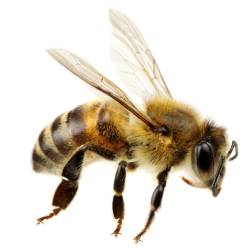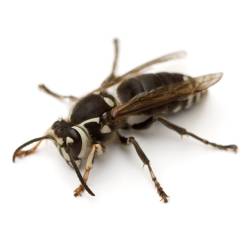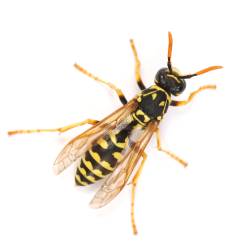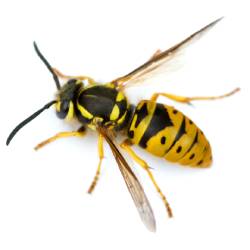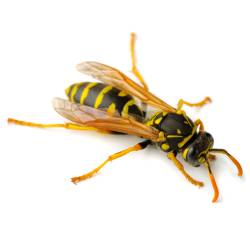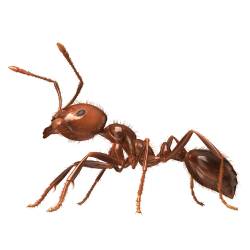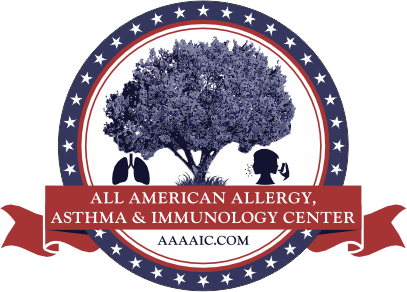Background – Common insects that cause allergic reactions include wasps, hornets, yellowjackets, and honeybees, as well as red and black fire ants. The incidence of deaths attributable to reactions from stinging insects is 0.03 to 0.48 fatalities per million inhabitants per year. This accounts for 62 deaths per year on average. Honey bee is the most lethal of the stinging insects. There are three types of reactions to insect stings:
Local reaction: swelling, pain, and redness confined to the general area of the sting. Generally these are not dangerous.
Large local reaction: symptoms include swelling, redness, pain and itching that may or may not be confined to the general area of the sting. Generally, these reactions are not dangerous, but very large areas of swelling and or symptoms >96 hrs may warrant further evaluation.
Systemic Reaction: an allergic reaction that results in symptoms other than localized swelling. Symptoms may include itching, hives or swelling away from the sting site. This type of reaction may progress to anaphylaxis. Anaphylaxis is a life-threatening allergic reaction which can include tightness in the chest and difficulty breathing, throat tightness, dizziness, a sharp drop in blood pressure, gastrointestinal symptoms, unconsciousness or cardiac arrest.
Anyone who has experienced an allergic reaction in the past has a significantly increased chance of a similar or worse reaction if stung again.
How it works/Pathophysiology – Exposure to insect venom that one is allergic to cause the immune system to produce an antibody (IgE). The IgE antibody in turns ignites and inflammatory cascade that can cause release of inflammatory mediators that can cause adverse symptoms of the skin, upper/lower airways, gastrointestinal system, and cardiac system. The severity can increase with subsequent exposures.
Prevention/Self Treatment Tips –
- Wear shoes while walking in the grass.
- Wear sleeves and pants when in grassy and or forested environments if you have a hx of reactions with insect stings
- Avoid nests – garden with care
- Stay away from trash cans
- Avoid perfumes, scented cosmetics, and bright-colored clothing, which seem to attract stinging insects
- Maintaining quality screens on household windows
- Avoid open footwear and loose-fitting clothes that can trap insects
- Keep insecticide in the car in case an insect inadvertently gets inside
- Keep picnic foods covered. Cover a soft drink can after opening to prevent an insect from falling in
- For localized reactions, use otc topical steroidal cream/ointment
- For large- localized reactions, use otc topical steroids, otc antihistamines, and otc NSAIDs
- For symptoms beyond localized skin involvement, seek medical attention ASAP
Diagnostic Testing – In -Vitro Aeroallergen testing consist of whole blood draw at a local lab for which the whole blood is analyzed for the IgE antibody to any of the suspected stinging insects. About 1.5 wks later, the allergy provider will discuss the results and overall interpretation.
Therapy
Venom Immunotherapy (Venom shots) – Venom shots or VIT are subcutaneous injections of a small amounts of the specific venom(s) that you are allergic to. It is just enough to stimulate your immune system in order to desensitize your body over time, which causes your allergy sxs to diminish over time. It is up to 95% effective. This is important since any patient with a history of systemic reaction to an insect sting has up to a 65% chance of this happening again. Studies show that most patients will need to be on the maintenance phase of AIT for at least (3-5) years in order to obtain long lasting benefit. For patients, with severe reactions they may need to be on VIT for 5 years or longer. VIT is conducted in (2) phases. The buildup phase for routine AIT will require a shot 2 times a week for the first (8) weeks in most cases. The maintenance phase requires an AIT shot once every (2-6) weeks thereafter in most cases. The overall rate of adverse reactions for VIT in most large validated studies is <1%. For patient’s with lifestyle and schedule conflicts we also offer Cluster and Rush buildups, which enables faster time to the maintenance phase in 4 wks or less. Patients must be observed in the clinic for at least (30) minutes after each shot. Allergy shots are administered on a “walk in” basis during normal business hours, so there is no need for an appointment.
EPIPEN (Epinephrine) – Emergency treatment must occur whenever a patient experiences a severe reaction to an insect sting. This can involve self-administration of injectable epinephrine. Epinephrine is also known as adrenaline. It is a synthetic hormone and neurotransmitter that temporarily reverses symptoms associated with systemic reactions by opening airways, improving cardiac function and improving decrease blood pressure. It can buy a patient enough time until paramedics arrive or they arrive to the ER. It is administered in an auto injectable form that is carried with a patient at all times.
Alert Jewelry – Alert jewelry in the form of a bracelet or pendent is worn by patients who have a history of systemic reactions in the setting of an insect sting. It is most helpful in the event that the patient becomes unconscious and is discovered by others. The jewelry would advise anyone of their allergy and should prompt them to administer the EPIPEN, which the patient should have on hand.
Prevention – Preventative treatment involves both limiting exposure to insects as much as possible.
Stinging Insects:
